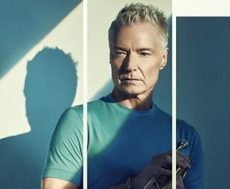
CHRIS BOTTI
Grammy-winning trumpeter Chris Botti has been one of the most popular instrumentalists in the world for nearly three decades. He’s collaborated with some of the biggest superstars on the planet, including Sting, Paul Simon, Barbra Streisand, Lady Gaga, Tony Bennett, Frank Sinatra, Aretha Franklin, Bette Midler, Joni Mitchell, Steven Tyler, Andrea Bocelli, Herbie Hancock and Yo-Yo Ma. He’s topped the jazz charts with numerous albums, earned multiple gold and platinum records, performed with symphony orchestras and on prestigious stages from Carnegie Hall to the Hollywood Bowl and the Sydney Opera House.
There’s nothing like a Chris Botti concert. He’s the complete package: a dazzling trumpeter at home in everything from jazz to pop and rock, a brilliant bandleader who lets his players shine and a born showman whose joy at being onstage is infectious.
More Posts: adventure,club,genius,jazz,music,preserving,travel,trumpet
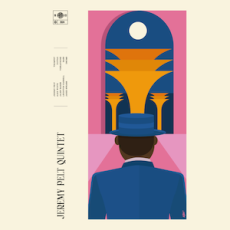
JEREMY PELT QUINTET
Born in the United States, Jeremy Pelt is one of the most outstanding trumpeters in the jazz world. A multiple winner of the prestigious Down Beat magazine’s plebiscite, he began his rapidly developing career in 1998, when, after graduating from Berklee College of Music, he moved to New York and joined the Mingus Big Band.
Pelt built many others on this relationship, very quickly gaining great recognition in the local jazz community, starting cooperation with the greatest masters of this genre (including performances and recordings by Cliff Barbaro, Keter Betts, Bobby “Blue” Bland, Ravi Coltrane, Frank Foster, Winard Harper, Jimmy Heath, Vincent Herring, John Hicks, Charli Persip, Ralph Peterson, Lonnie Plaxico, Bobby Short, Cedar Walton, Frank Wess, Nancy Wilson and The Skatalites). He often performs alongside renowned bands such as The Village Vanguard Orchestra and Duke Ellington Big Band, and is also a member of the Lewis Nash Septet and The Cannonball Adderley Legacy with guest artist Louis Hayes. As a leader, Pelt has recorded ten albums, toured around the world with his own various bands, and appeared at many festivals and jazz stages.
Pelt’s recordings and performances have earned him critical acclaim, both at home and abroad. Nat Hentoff, legendary jazz columnist and producer, singled out Jeremy Pelt in the Wall Street Journal. For five years in a row, Downbeat Magazine and the Jazz Journalist Association have named Pelt a rising trumpet star. In 2023, the Jazz Journalist Association named Pelt the best trumpeter in the United States – Trumpeter of the Year.
In 2021, Jeremy Pelt made his debut as a writer, publishing the first in the planned series “Griot: Examining the Lives of Jazz’s Great Storytellers” vol.I, in 2022 vol.II, and in spring 2023 vol.III. The books contain conversations, most of which concern issues of racial and cultural identity and attitude to life.
Pelt is currently touring promoting his latest album, Jeremy Pelt – Soundtrack.
Line-up:
Jeremy Pelt – trumpet
Alex Wintz – guitar
Jalen Baker – vibraphone
Leighton Harrell – bass
Jared Spears – drums
Tickets In Dollars: $38.65
More Posts: adventure,club,genius,jazz,music,preserving,travel,trumpet
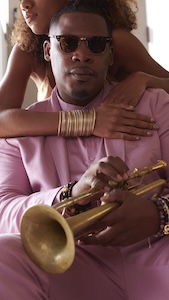
KEYON HARROLD
Keyon Harrold, a world-class jazzman, returns to Warsaw at Jassmine and will feature his new album Foreverland. It is full of emotion and drama, a triumphant journey that takes the listener through good, bad, ugly and beautiful experiences, leading to wisdom. Harrold says: What I can offer as a musician playing an instrument is an honest communication of emotion.
We had the opportunity to hear Harrold’s trumpet on two Grammy Award-winning albums – the soundtrack to the film “Miles Ahead” and “Take Me to the Alley” by Gregory Porter. In the Jazz Times readers’ vote for the best newcomer of 2015, Keyon took second place. Wynton Marsalis himself called him “the future of the trumpet”. The work of the star of the Jassmine concert is the result of jazz traditions, the spirit of soul and R&B music, and hip-hop energy and authenticity. Keyon Harrold doesn’t care about genre labels.
Tickets In Dollars: $51.61
More Posts: adventure,club,genius,guitar,jazz,music,preserving,travel,trumpet
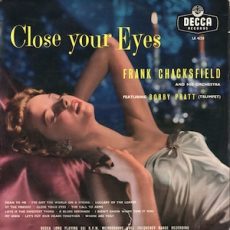
Daily Dose Of Jazz…
Robert Stuart Pratt was born on January 24, 1927 in Aberdeen, Scotland and was a professional musician from the age of 16, having mastered trumpet, flugelhorn, piano, drums and vocals. He served in the Royal Corps of Signals leading the Skyliners Army Dance Band.
In 1948 he joined Ken McIntosh’s outfit for a year before joining Ted Heath the following year. Due to his ability to play high and loud brought distinction to the brass section and his high note duets with Bert Ezzard became a highlight of the band’s appearances. Bobby was a mainstay with Heath until 1960.
As one of the busiest session players in Britain, Pratt found himself in high demand not only for jazz big band work but consistent work with top jazz and pop perfprmers in both record, tv and film studios. He played in the big bands of Humphrey Littelton, Eddie Harvey, Tubby Hayes, Tommy Watts, Vic Feldman, Jack Parnell, the Forty Two Big Band and the Downbeat Big Band.
Over the course of his career Bobby also recorded as a member of the Tommy Whittle Septet, The Kirchin Band, the Johnny Keating All Stars, Frank Chacksfield and Kenny Baker’s Dozen.
Trumpeter Bobby Pratt committed suicide on June 5, 1968 at the age of 41.
More Posts: drums,flugelhorn,history,instrumental,jazz,music,piano,trumpet,vocal
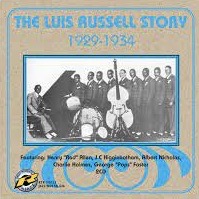
Daily Dose Of Jazz…
Otis Johnson was born on January 13, 1908 in Richmond, Virginia. He began his career in the late 1920s, working with Gene Rodgers, Henri Saparo, Eugene Kennedy, and Charlie Skeete. In 1929 he joined Luis Russell’s band, and rejoined Kennedy’s group before working with Benny Carter in 1934. He played with Charlie Turner and Willie Bryant in the mid-1930s.
Toward the end of the decade he performed with Louis Armstrong and Don Redman. On December 30, 1940 Otis enlisted in the 369th Coast Artillery of the New York Army National Guard. He was discharged on October 13, 1945.
Trumpeter Otis Johnson, who never returned to active performance after leaving the military, died on February 28, 1994.
More Posts: history,instrumental,jazz,music,trumpet


